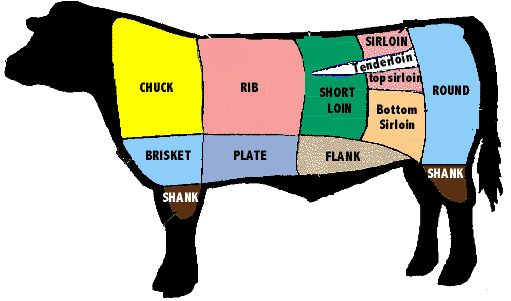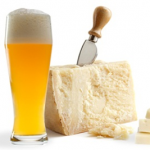Everything you wanted to know about stir-fry beef but were afraid to ask
I get lots of food related questions from friends, family and the mildly acquainted.
“I’m having a party, what should I make?”
“I’m out of X, can I use Y?”
“If I buy it, will you cook it?”
As I’m going to be posting a Chinese recipe this weekend for Crispy Orange Beef, I thought it would be helpful to post some of the most frequently asked questions about stir-frying beef:
Should I buy the butcher/grocery store prepackaged stir-fry beef?
No. There are a few things working against you here:
- The fresher the beef the better. When a piece of beef has been sliced up and prepackaged, the surface area exposed to oxygen is that much greater. This means the beef is less fresh, less juicy, and less ideal.
- Last time I checked there is no cut of beef called the “stir-fry”. If a butcher has not disclosed what cut of beef this is from, it is likely because he doesn’t want you to know.

OK smart guy, what beef should I be buying for stir-fry?
I heard a great beef tip (no pun intended) the other day. In essence, anyone who wants a tender piece of beef should remember – the front of the cow is for roping, and the back end is for branding. Anything in between is A-OK when it comes to eating.
The tough muscles in the neck of the cow (such as the brisket) require hours and hours to breakdown. Clearly not what we’re looking for. The round, or rump, at the other end spends so much time being exercised it too is much too tough for this use.
Ideally, you’re going to want a cut that’s tender, juicy, but not overly fatty. Any of the fillet, sirloin, flank, or skirt will do nicely.
How do you prepare stir-fry so that it’s soft & tender and not tough & chewy?
- Cutting: Once you’ve purchased your cut of beef and brought it home, cut it into thin slices, across the grain, approximately one inch in length. Try to keep them evenly sized to ensure even cooking. Cutting across the grain will ensure you have no tough strands in your final dish.
- Preparation: You may have come across the term velveting or silkening the beef (or chicken). This is a Chinese method of treating beef with cornstarch and rice wine. It gives the protein a tender, velvety texture. It is a MUST for Chinese cooking. If the recipe you’re using skips this step… then skip the recipe!
- Cooking: Don’t overcook your beef. Fresh beef will cook very quickly when flash fried or stir-fried over high heat. Keeping cooking temperatures high and cooking times low will ensure you get beef that melts in your mouth instead of wrestling it with each bite.
Hope this helps – feel free to fire any additional questions my way.
Filed under: Method on May 6th, 2010




[…] are all natural and simple. The dish comes out just how you’d hope – the beef is silky soft, the exterior is crispy and not too oily, the orange sauce is vibrant and sweet, but not […]
I’d like to start my own blog eventually. It was a really nice blog that you made here. Continue the success 😛